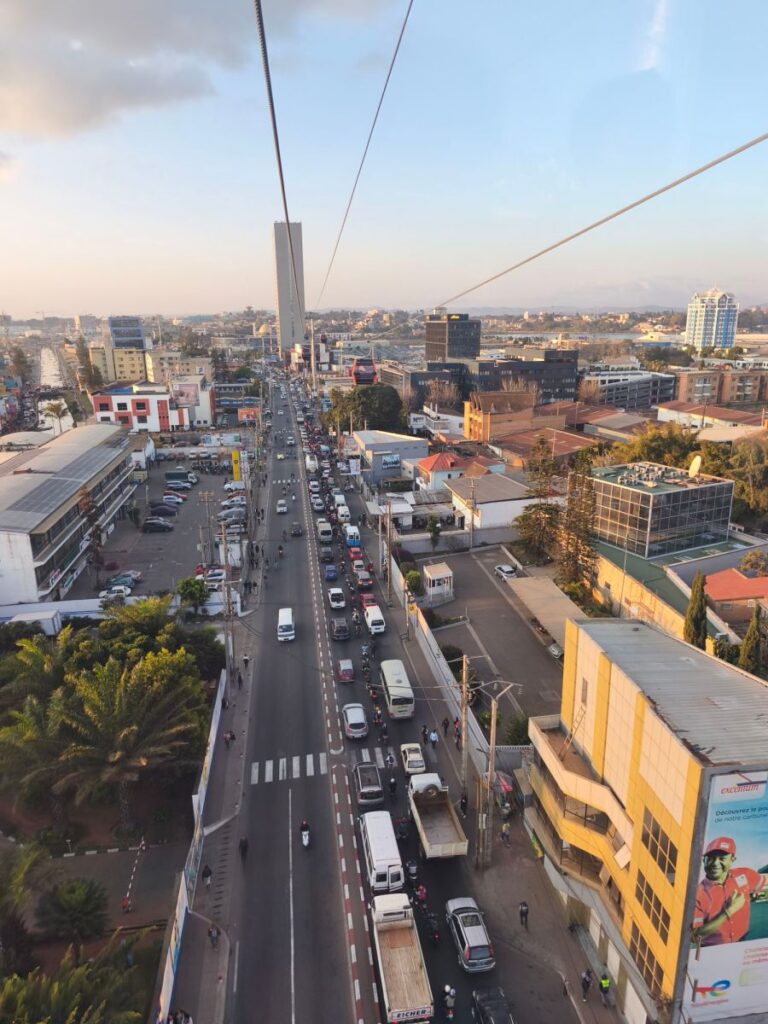The cable car is now a reality that shapes the urban landscape in Antananarivo. With my experience in regional planning and environment in Madagascar, it seems essential to me to go beyond initial debates and to reflect concretely in the manner of making the most of this infrastructure.
A solution to traffic jams?
Let’s be realistic, the cable car will not resolve the chronic traffic jams of the Malagasy capital, unlike certain politicians. The streets of Tanà remain congestioned, and it would be illusory to think the opposite. However, it offers an important alternative of mobility for certain users, in particular those who make the ambatobe-Ivandry- Anosy route. For these workers, students or students, the cable car can represent a significant saving of time, provided that their home and their workplace are located near the stations.
In my role as a regional planning teacher, I wonder about the integration of this new infrastructure into the existing urban fabric: does it promote harmonious development of the city, or does it risk strengthening spatial inequalities? Only the future will tell us if this infrastructure will contribute to a more balanced city, but it is our duty to ensure that its impact is positive for all inhabitants.
A profitable investment?
The cost of the cable car (160 million euros) is undeniably high. At the current rate of attendance, it is unlikely that the investment will be profitable in the medium term. As a defender of a balanced regional planning, I think that this money could have been invested in more structuring projects, such as improving road infrastructure or access to basic services.
But the past is the past. The infrastructure is in place, and it is time to turn to the future and explore the promotion tracks. Because let’s not forget, it is above all a public service: the objective is not necessarily to make profits, but to improve the lives of the Tananarivians.
An urban integration well thought out?
It is crucial to think about the development of the cable car stations, in order to promote intermodality with other modes of transport (bus, taxis, bikes) and to create convivial public spaces. A reflection on pedestrian service and landscaping is also necessary. Indeed, the integration of the cable car into the existing urban fabric is a major challenge, which requires a global and concerted approach. It is not enough to build stations. You have to rethink the development of their surroundings in order to create pleasant and functional living spaces.
Sustainable tourism, a lever to activate
The cable car offers a breathtaking view of Antananarivo. It can become an asset for the development of sustainable tourism, allowing visitors to discover the city from a different angle, while reducing their environmental footprint. A targeted communication campaign, highlighting the cultural and natural heritage of the capital, could attract an audience interested in responsible tourism. It can also encourage the inhabitants themselves and those of other regions to rediscover Antananarivo and to appropriate this new space of mobility.
Energy transition, an emergency!
By my knowledge of the territory, I am particularly concerned about the mode of power of the cable car, which is currently based on generatorial groups. The supply of the cable car must imperatively evolve towards clean solutions, whether it is the electrical network or renewable energies, and this as soon as possible. The energy transition from the cable car is a major issue for the credibility of this project.
Rigorous maintenance, an absolute imperative!
Money from the sale of tickets must be priority assigned to the maintenance and maintenance of the cable car. It is essential to guarantee the safety and comfort of users, by ensuring optimal long -term operation. It is crucial to emphasize that the slightest failure or the slightest accident could have disastrous consequences, both human and on the confidence of users towards this mode of transport. The psychological impact of such an event would be unthinkable and could durably compromise the support of the population to the cable car
In short, the Antananarivo cable car is a challenge for regional planning. I believe that it is possible to transform it into an asset for the city, provided that it is harmoniously integrated into the urban fabric, to promote sustainable tourism and to initiate an ambitious energy transition.
Rasamy
